- Home
- Alison Weir
Katherine Swynford Page 10
Katherine Swynford Read online
Page 10
For a long time, basing their conclusions on the likely birth date of her son, historians assumed that Katherine was married to Sir Hugh Swynford around 1366—7. Yet we know that she was the mother of a daughter called Blanche, who was old enough to be placed in the train of the Lancastrian princesses before 1368, and it appears that Katherine was probably also the mother of one Margaret Swynford, who was of sufficient age to become a nun in 1377. Of course, girls sometimes entered convents in their tender years - witness Mary, a daughter of Edward I, who became a novice at Amesbury Abbey in 1284, aged six; or Bridget, the youngest daughter of Edward IV, who was perhaps seven when she was placed in Dartford Priory around 1487. But it was more usual for girls to be adolescents of thirteen or fourteen at the time of their reception.26 It would seem that there was a tradition of offering Roët daughters to God - witness the cloistering of Elizabeth de Roët and the eldest daughter of Katherine's sister Philippa; therefore, if Margaret became a nun at the usual age, and Blanche was the eldest child of Katherine and Hugh, the Swynfords are likely to have been married no later than 1362, not long after Hugh came into his inheritance and Katherine reached marriageable age. Certainly they were joined in wedlock before 24 January 1365, as an entry of that date in Bishop Buckingham's register refers to Katherine by her married name. Their marriage may have taken place in one of the ducal chapels - even perhaps the magnificent chapel of the Savoy.
Once married, Katherine's arms of three silver wheels on a red background would have been displayed impaling those of her husband, which were three golden boars' heads on a black chevron with a silver background. These are the arms that appeared on her seal of c. 1377, which no longer survives.
It used to be said that Katherine married into an ancient landed aristocratic house. Although it is true that the Swynford family was old-established in Lincolnshire, Northamptonshire, Huntingdonshire, Essex and Suffolk, it was hardly landed and certainly not aristocratic, for its members never rose above the rank of knight. In fact, Hugh was impoverished. He held only two manors, neither of which was profitable, and both had been recently acquired by his father3' — hardly ancient wealth by any reckoning, as Katherine was to find out when Hugh first took her to his manor house at Kettlethorpe, which after his marriage he held jointly with his new wife of the King and John Buckingham, Bishop of Lincoln.
Kettlethorpe was to become inextricably linked to Katherine in her own lifetime; for forty years she was known as the Lady of Kettlethorpe, and her memory is very much alive there today for the many visitors who make the journey — some would say pilgrimage — to this pretty, quiet but rather isolated Lincolnshire village, which is situated about twenty feet above sea level, and lies twelve miles west of Lincoln, just north of the border with Nottinghamshire. The River Trent flows west of Kettlethorpe, and the Fossdyke meanders along its eastern and northern boundaries. It is 'a romantic spot, embowered by trees'.33
The manor took its name from a Viking who is said to have settled there in the ninth century, Lincolnshire being part of the Danelaw in Saxon times. His name was Ketil, and the place he lived in became known as Ketil's Thorpe (or village), which over time became corrupted to Kettlethorpe. There is no mention of the settlement in Domesday Book, so it must have been very small, if indeed it still existed in 1086, in which case, the story of the Viking settler may have been an oral tradition preserved in local places such as nearby Newton-on-Trent, which is on record as a Domesday village. In fact, there is no mention of Kettlethorpe in historical documents until 1220. The de la Cray family had come into possession of it by 1287.
The present Kettlethorpe Hall incorporates fragments of the mediaeval house that Katherine knew, and is still surrounded by a moat. All that survives of the original hall are interior walls in the two barrel-vaulted cellars, the remains of a passage from those cellars that is reputed to have led to the church opposite, a blocked fourteenth-century doorway and some stonework on the southern elevations, a few carved heads and, standing apart, a ruined yet imposing fourteenth-century embattled and buttressed stone gatehouse with sunken mouldings, a survival probably from the 1370s, when Katherine was converting Kettlethorpe into a residence of some magnificence. The gatehouse was reconstructed in the early eighteenth century, but not entirely successfully: the lower stones were reassembled authentically enough, but the upper parts owe much to the imagination of the builder who carried out the restoration. To the left is a mediaeval mounting-block, three steps high.We might imagine Katherine standing by it with a stirrup cup, bidding Sir Hugh farewell as he rode off to war.
When Katherine came to Kettlethorpe, after living in luxurious royal palaces since her childhood, she must surely have been dismayed by its poverty. The place was in serious disrepair. Even in 1372, after she had lived there on and off for the best part of a decade, it was 'ruinous, and the land sandy and stony and out of cultivation'; the only crops it would support were hay, flax and hemp, while the meadow was frequently flooded by the overflow from the nearby River Trent.
As lord of the manor, Hugh had the right to appoint priests to the twelfth-century parish church of St Peter and St Paul that stood to the north of the house, a privilege that Katherine herself would one day exercise; in March 1362, Hugh presented one Robert de Northwood as rector. Katherine would have had frequent dealings with Northwood, who may have acted as her confessor when she was at Kettlethorpe; and because the manor population was small, she probably came to know everyone else quite well too.
Kettlethorpe had appurtenances in the nearby villages of Laughterton, Newton-on-Trent and Fenton, all of which lay about a mile distant in different directions. In all, the Swynford holdings in the area comprised around three thousand acres, most of which was forest — prime hunting ground for the lords of the manor.35 And we may be certain that when she was not pregnant, Katherine, like most ladies of rank, rode out with her husband and helped to put food on the table.
Kettlethorpe was Sir Hugh Swynford's chief residence, but not far off was his manor of Coleby, which was spectacularly perched high up on the Lincoln Cliff escarpment, and commanded beautiful views of the Witham valley. It lay seven miles south of Lincoln, to the west of Ermine Street, the old Roman road that ran from London to Lincoln and York. The manor, which Hugh and Katherine now held jointly, was divided into two equal parts, each comprising roughly ninety acres of land and fifteen acres of pasture. In 1367, it was recorded that the part of this manor known as the South Hall, or Southall, which yielded 54s.4d £785) each year in rents paid by free tenants, was held of John of Gaunt as Earl of Richmond by service, or rent, of 2s (£29) per annum or 'a sorrel sparrowhawk'.The other part of the manor, the North Hall, or Northall, was held in chief of the King, by service of half a knight's fee; as far back as 1086, the manor of'Colebi' had been recorded in Domesday Book as the property of the Crown. Earlier, like Kettlethorpe, it had been a Danish settlement, under a man called Koli, from whom it took its name; and earlier still, it may have been colonised by the Romans, for it is near Ermine Street and Roman coins have been found in the vicinity. Much later, in the twelfth century, the manor had been held by William the Lyon, King of Scots. At that time, a Gilbertine priory dedicated to St Katherine was established in the village. A windmill - probably one of several — was in existence in 1361.
Hugh could never have relied on receiving the rents due from his Coleby tenants, for there was little prospect of any yield, let alone a surplus, from the land, which was poor. In 1361, when he inherited it, Coleby was a dismal place, worth only 37s.10d (£601), less than a third of its value when Sir Thomas Swynford had bought it in 1345. 'The soil is hard, stony and uncultivated because of its barrenness, the dovecote and windmill are in ruins', and no profit could be raised from them until they were repaired; the meadow was hard, choked with brambles and too dry to be of any benefit. Given these circumstances, Hugh's tenants may not always have found the means to pay their rents, which might explain why, a decade later, in 1372, the manor was still barren and imp
overished and worth nothing.
Apart from the Saxon church with its later mediaeval additions -the spire is fifteenth century — no buildings from Katherine's time survive in Coleby. The earliest is Old House in the High Street, which is Tudor. The original manor house was the North Hall, which lay two hundred metres north of the village, and had been built in the eleventh century by the then lady of the manor, Judith of Boulogne, Countess of Northumbria and Huntingdon, a niece of William the Conqueror and the ancestress of William the Lyon. The present Coleby Hall, built in 1628, stands on the site of the North Hall, and its walls were raised on the stone foundations of the earlier building. In 1372, in a royal writ assigning Katherine her dower, the North Hall was described as having at the west end of its great hall 'a chamber called the West Chamber', a wardrobe for the storage of clothes, jewels and other personal items, and 'le faux chambre', which literally translates as 'the false room'; one is tempted to wonder if this was just an alcove (which is not a proper room) or if there was a concealed room leading off the West Chamber. Underneath these chambers were cellars for the storage of provisions. There was a kitchen, which was perhaps at the eastern end of the hall, a cowhouse and an adjoining croft known as Belgarthes: 'the fair sward’. The western chambers of the hall overlooked part of the garden. Nearby was the Saxon church of All Saints." It was a far cry from the Savoy.
Only a few miles from Kettlethorpe and Coleby lies the great city of Lincoln, which Katherine came to know — and probably love — very well: her husband's family was well known in its civic society, she herself would reside there for several years, and at least one of her children was born there.
In the fourteenth century, Lincoln was a rich and prosperous city, dramatically situated on a high ridge. It was dominated by its castle, which had been built by William the Conqueror in 1068, and its spectacular cathedral. Between the two lay the upper town centre - 'the Bail' - and surrounding the cathedral was the walled close with its substantial clergy houses and splendid twelfth-century Bishop's Palace, which boasted three halls. The close was accessed from the Bail through the now-ruined Exchequer Gate. Just beyond the gate, Steep Hill sloped dizzyingly down to the lower parts of the town, which were known as 'the City', and on that hill stood two twelfth-century Norman houses, one of them the famous Jew's House, as well as several other notable buildings. The mediaeval Guildhall stood near the bottom of Steep Hill. Lincoln was a great trading centre, annually hosted six fairs, and boasted fifty churches.
Lincoln Castle, in which extensive Norman buildings still survive within the walls, was then surrounded by deep ditches and high banks. Its main entrance was to the east, facing the Exchequer Gate, while the western gate of the castle led to open countryside. The shell keep was known as St Lucy's Tower, and stood on a mound raised around 1200. In the thirteenth century, a vaulted, horseshoe-shaped tower known as Cobb Hall had been inserted into the north curtain wall of the castle. In Katherine's day, the castle precincts were part of the Bail.
Lincoln Cathedral was at that time the third largest in England. The original Norman structure had been destroyed by a fire in 1141 and an earthquake in 1185, and had been rebuilt from 1192 onwards in the Early English style by St Hugh, Bishop of Lincoln. In Katherine's time the cathedral was a massive edifice with three Perpendicular towers and a magnificent west front adorned with myriad sculptured figures; solid on its high hill, it soared majestically over the city and could be seen for miles around. Pilgrims came flocking to make their devotions at the wondrous silver shrine of St Hugh, a masterpiece of intricate stone tracery encrusted with precious metals and gems, which reposed in the beautiful Angel Choir at the cathedral's east end; this choir had been built in the 1260s and was named after the carved angels with which it was lavishly decorated. For Hugh Swynford, the shrine of his patron saint must have been a very special place, to be visited often, while for Katherine, the cathedral had an altar to her own name-saint, and housed two precious objects of special devotion: a finger that had reputedly belonged to St Katherine, and a chain with which the saint is said to have bound up the Devil.
John of Gaunt also had strong links with Lincoln. At the age of two, he had been granted the earldom of Richmond, which incorporated lands in Lincolnshire. At three, he had come to Lincoln Cathedral with the King his father and his brother the Black Prince, and been admitted to its confraternity, a group of lay benefactors who were prayed for by the cathedral clergy in gratitude for their gifts; John was to prove very generous to the cathedral over the years, and in his will would refer to 'a certain devotion' he~ cherished for its patroness, the Virgin Mary. In the Angel Choir lay the visceral tomb of his great-grandmother, Eleanor of Castile, the beloved wife of Edward I. At twenty-one, John had acquired the earldom of Lincoln itself, with its vast estates, in right of his wife Blanche; in this capacity, he grew familiar with the great and gentle families of the shire, and numbered several of their members among his retinue. He would in time forge even closer links to Lincoln and the surrounding area through his involvement with Katherine Swynford.
As Earl of Lincoln, John was hereditary Constable of Lincoln Castle, yet it is not known if he ever lodged in the castle on his brief visits to the city, or if he stayed in the Bishop's Palace, a house in the cathedral close or one in the town. It was perhaps the latter, since the castle could only offer somewhat outdated accommodation.
Tradition long had it that John of Gaunt owned a palace in Lincoln, an ancient stone mansion that stood to the west of the High Street in Wigford, a southern suburb of the city. The 'palace' was situated on the west side of the churchyard of the Guild of St Anne, which adjoined St Andrew's Church. According to an engraving of 1726 by Samuel and Nathaniel Buck, it was a mediaeval house with stone pinnacles and windows of the Decorated period; beneath a gable in the centre of the extended battlemented front facade was affixed a carved freestone shield bearing the arms of John of Gaunt, surmounted by his helm and mantling. Another old print reveals that the south range of this house was built in the later Perpendicular style, possibly in the fourteenth century. It boasted buttresses, a battlemented cornice, and square-headed two-light windows.
All this would be commensurate with the house having existed in John's lifetime; probably it had been altered during the centuries since his death. Buck tells us that 'the castle was his, but standing much exposed to cold winds, and a place of office for the public service'; because of these drawbacks, 'that Prince probably built this below the hill for warmth, and for the use of his family and domestics, while he resided in this most ancient city'. Buck claims that John stayed here mainly in his latter years, and unsurprisingly, Katherine Swynford is also said to have had the use of the house.
There is little contemporary evidence to connect John of Gaunt with this building; nor did the early-sixteenth-century antiquarian John Leland associate him with it; instead, he says this 'goodly house' belonged to the Suttons, who were the richest and most prominent mercantile family in Lincoln in the late Middle Ages and held lands of the Duke in the county. However, in 1586, the house was called 'John of Gaunt's Palace’ by William Camden, the Elizabethan antiquary who spent fifteen years researching the historic buildings of England, and both Buck and the antiquary William Stukeley, writing in the 1720s, refer to it by that name. But later, in 1784, a Swiss artist called Samuel Hieronymous Grimm labelled his drawing as 'the pretended house of John of Gaunt at Lincoln'. Today, historians are inclined to believe that it did not have any connection with the Duke.
John of Gaunt never stayed in Lincoln for long enough to justify the building of a residence there, and there is no reference to this house in his registers, but these are of course incomplete. Yet it was certainly his coat of arms that Buck engraved, and it is indeed possible that it was for reasons of comfort that John lodged in this house whenever he was in the city. That does not mean it belonged to him; the evidence suggests that he probably stayed there as a guest of his vassal, John de Sutton, who died in 1391, and then of Sutt
on's son Robert. John de Sutton, who was Mayor of Lincoln in 1387, certainly knew Katherine Swynford, because that year he witnessed a grant to her;45 he was probably the owner of the house in Wigford, and was no doubt proud to display on it the arms of his overlord and honoured guest. It may be significant that the mansion boasted some of the innovative Perpendicular architectural features that were becoming fashionable at the end of the fourteenth century, the period when Buck says the Duke stayed there most frequently. One would expect to find such novel features only in the house of some great and wealthy man, who was eager to offer his lord the best accommodation that money and influence could provide.
These were the places that Katherine now called home: the impoverished manors of Kettlethorpe — for which she nevertheless conceived an enduring affection — and Coleby, where no trace of her remains, suggesting — perhaps understandably, in view of its penury — that she was rarely there. And of course Lincoln, where she was to live in far greater luxury than she could ever have dreamed at the outset of her marriage to Hugh Swynford.
What can we know or surmise about the marriage of Katherine and Hugh? Katherine was very young when they were wed, and Hugh was a soldier who would serve abroad on campaigns for long periods. There is no evidence to show whether the couple were happy or unhappy, although it is unlikely that Katherine found with her husband the kind of love that was between John of Gaunt and his Duchess. Marriages such as Katherine and Hugh's were matters of business or policy that took little account of personal feelings. Hugh wasn't wealthy — far from it — but he could provide Katherine with his knightly rank and social standing; on the other hand, living in poverty may well have put a strain upon the relationship. But although Hugh is unlikely to have got much of a dowry with Katherine, if any at all, for him there was the advantage of a connection with a noble family, which would surely have inspired respect for his wife, and the prospect of her inheritance in Hainault, which may still have been in the hands of her father or brother at this time, for Hugh is not known to have attempted to take possession of it; and even if it had come to him on his marriage to Katherine, he was preoccupied with war and with rescuing his own estates from ruin, and would probably not have had the resources to administer and farm land in another country.

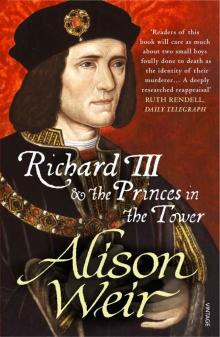 Richard III and the Princes in the Tower
Richard III and the Princes in the Tower Britain's Royal Families: The Complete Genealogy
Britain's Royal Families: The Complete Genealogy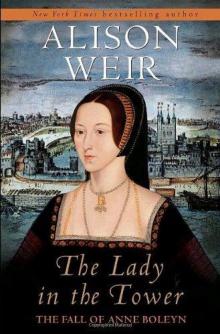 The Lady in the Tower: The Fall of Anne Boleyn
The Lady in the Tower: The Fall of Anne Boleyn Six Wives of Henry VIII
Six Wives of Henry VIII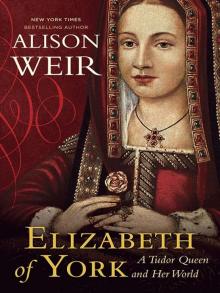 Elizabeth of York: A Tudor Queen and Her World
Elizabeth of York: A Tudor Queen and Her World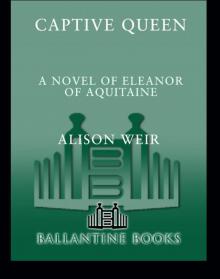 Captive Queen
Captive Queen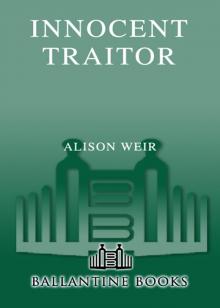 Innocent Traitor
Innocent Traitor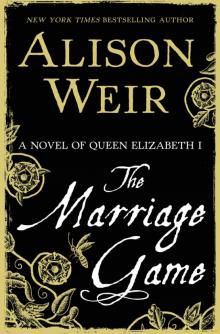 The Marriage Game
The Marriage Game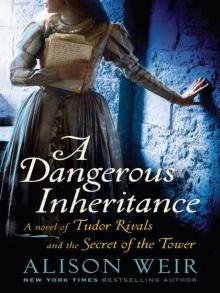 A Dangerous Inheritance
A Dangerous Inheritance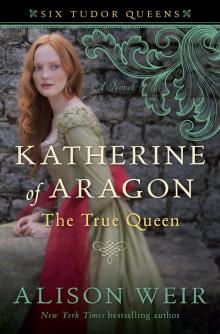 Katherine of Aragón: The True Queen
Katherine of Aragón: The True Queen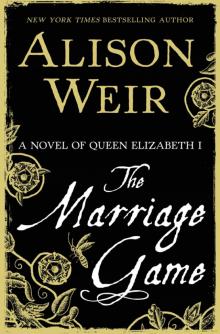 The Marriage Game: A Novel of Queen Elizabeth I
The Marriage Game: A Novel of Queen Elizabeth I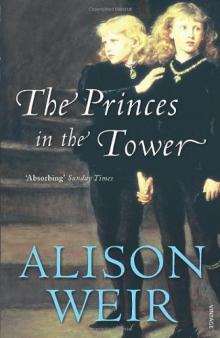 Princes in the Tower
Princes in the Tower Anne Boleyn: A King's Obsession
Anne Boleyn: A King's Obsession Traitors of the Tower
Traitors of the Tower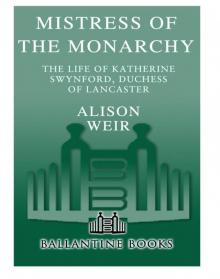 Mistress of the Monarchy: The Life of Katherine Swynford, Duchess of Lancaster
Mistress of the Monarchy: The Life of Katherine Swynford, Duchess of Lancaster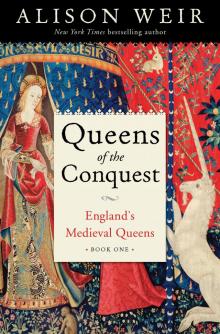 Queens of the Conquest: England’s Medieval Queens
Queens of the Conquest: England’s Medieval Queens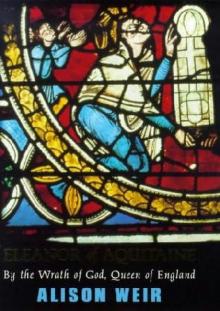 Eleanor of Aquitaine: A Life
Eleanor of Aquitaine: A Life Mary, Queen of Scots, and the Murder of Lord Darnley
Mary, Queen of Scots, and the Murder of Lord Darnley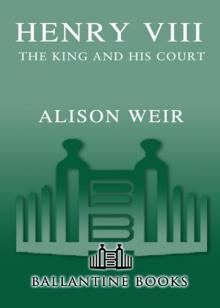 Henry VIII: The King and His Court
Henry VIII: The King and His Court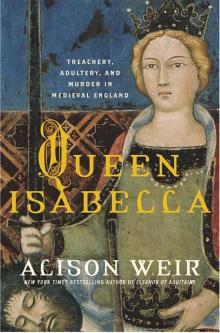 Queen Isabella: Treachery, Adultery, and Murder in Medieval England
Queen Isabella: Treachery, Adultery, and Murder in Medieval England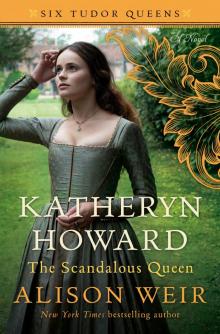 Katheryn Howard, the Scandalous Queen
Katheryn Howard, the Scandalous Queen Arthur- Prince of the Roses
Arthur- Prince of the Roses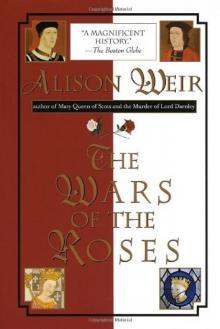 The Wars of the Roses
The Wars of the Roses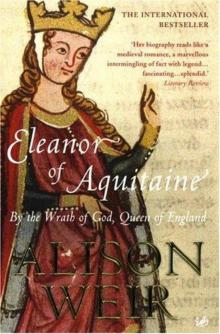 Eleanor of Aquitaine: By the Wrath of God, Queen of England
Eleanor of Aquitaine: By the Wrath of God, Queen of England Mary Boleyn: The Great and Infamous Whore
Mary Boleyn: The Great and Infamous Whore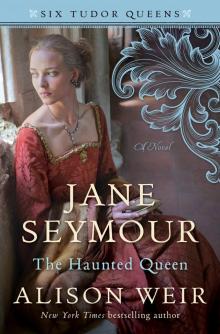 Jane Seymour: The Haunted Queen
Jane Seymour: The Haunted Queen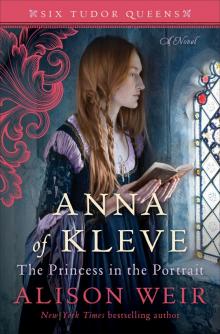 Anna of Kleve, the Princess in the Portrait
Anna of Kleve, the Princess in the Portrait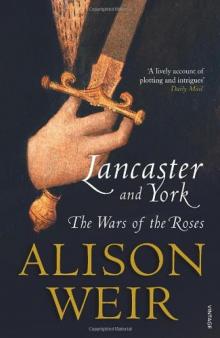 Lancaster and York: The Wars of the Roses
Lancaster and York: The Wars of the Roses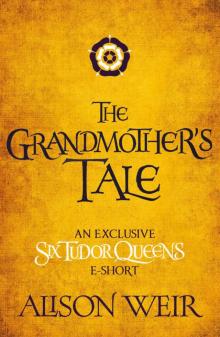 The Grandmother's Tale
The Grandmother's Tale The Princess of Scotland (Six Tudor Queens #5.5)
The Princess of Scotland (Six Tudor Queens #5.5)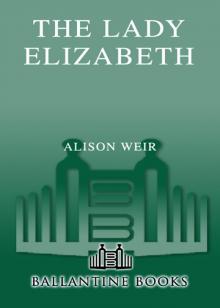 The Lady Elizabeth
The Lady Elizabeth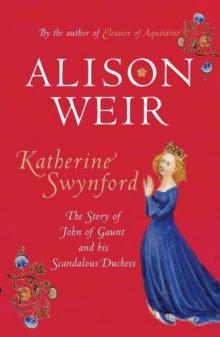 Katherine Swynford: The Story of John of Gaunt and His Scandalous Duchess
Katherine Swynford: The Story of John of Gaunt and His Scandalous Duchess The Curse of the Hungerfords
The Curse of the Hungerfords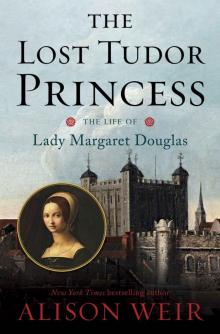 The Lost Tudor Princess: The Life of Lady Margaret Douglas
The Lost Tudor Princess: The Life of Lady Margaret Douglas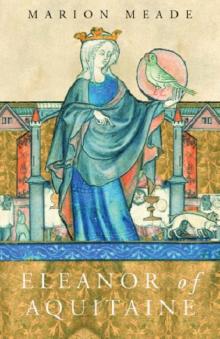 Eleanor of Aquitaine
Eleanor of Aquitaine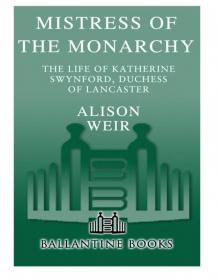 Mistress of the Monarchy
Mistress of the Monarchy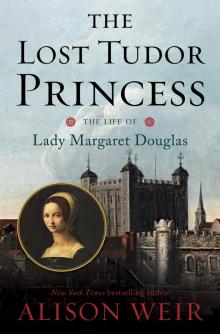 The Lost Tudor Princess
The Lost Tudor Princess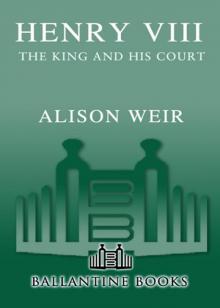 Henry VIII
Henry VIII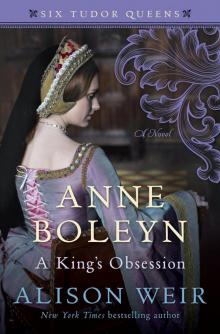 Anne Boleyn, a King's Obsession
Anne Boleyn, a King's Obsession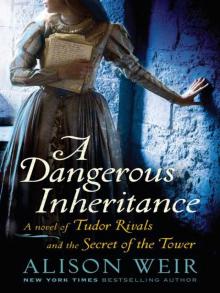 A Dangerous Inheritance: A Novel of Tudor Rivals and the Secret of the Tower
A Dangerous Inheritance: A Novel of Tudor Rivals and the Secret of the Tower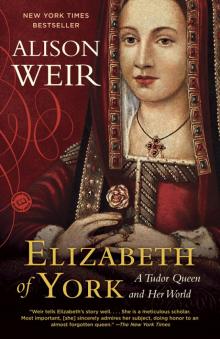 Elizabeth of York
Elizabeth of York Katherine of Aragon, the True Queen
Katherine of Aragon, the True Queen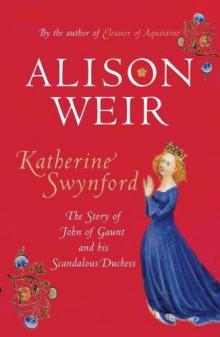 Katherine Swynford
Katherine Swynford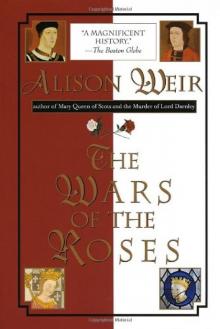 Wars of the Roses
Wars of the Roses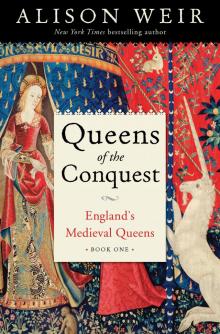 Queens of the Conquest
Queens of the Conquest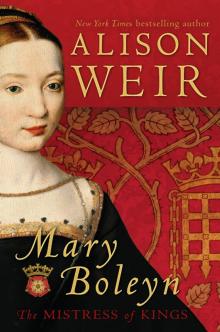 Mary Boleyn
Mary Boleyn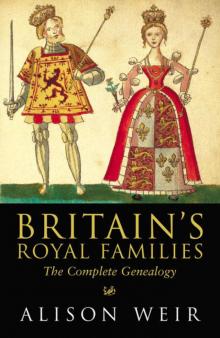 Britain's Royal Families
Britain's Royal Families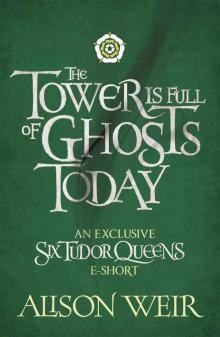 The Tower Is Full of Ghosts Today
The Tower Is Full of Ghosts Today Life of Elizabeth I
Life of Elizabeth I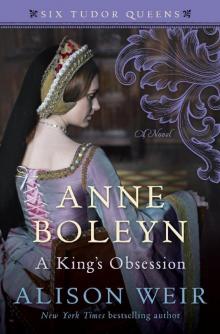 Anne Boleyn A King's Obssession
Anne Boleyn A King's Obssession Lancaster and York
Lancaster and York Jane Seymour, the Haunted Queen
Jane Seymour, the Haunted Queen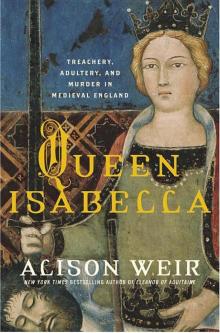 Queen Isabella
Queen Isabella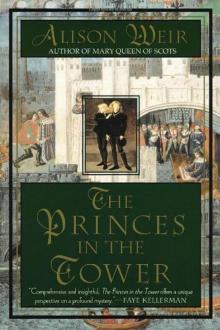 The princes in the tower
The princes in the tower